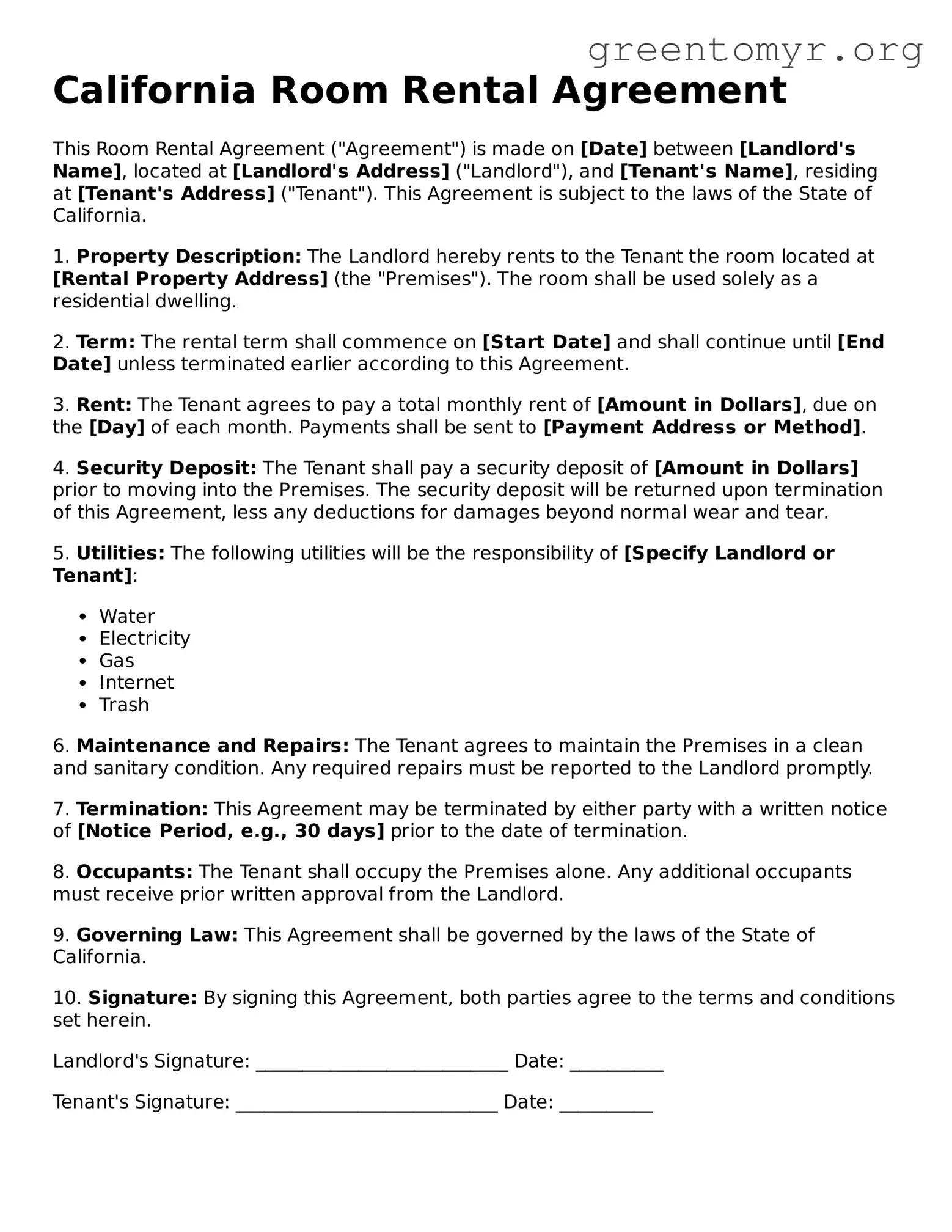California Room Rental Agreement
This Room Rental Agreement ("Agreement") is made on [Date] between [Landlord's Name], located at [Landlord's Address] ("Landlord"), and [Tenant's Name], residing at [Tenant's Address] ("Tenant"). This Agreement is subject to the laws of the State of California.
1. Property Description: The Landlord hereby rents to the Tenant the room located at [Rental Property Address] (the "Premises"). The room shall be used solely as a residential dwelling.
2. Term: The rental term shall commence on [Start Date] and shall continue until [End Date] unless terminated earlier according to this Agreement.
3. Rent: The Tenant agrees to pay a total monthly rent of [Amount in Dollars], due on the [Day] of each month. Payments shall be sent to [Payment Address or Method].
4. Security Deposit: The Tenant shall pay a security deposit of [Amount in Dollars] prior to moving into the Premises. The security deposit will be returned upon termination of this Agreement, less any deductions for damages beyond normal wear and tear.
5. Utilities: The following utilities will be the responsibility of [Specify Landlord or Tenant]:
- Water
- Electricity
- Gas
- Internet
- Trash
6. Maintenance and Repairs: The Tenant agrees to maintain the Premises in a clean and sanitary condition. Any required repairs must be reported to the Landlord promptly.
7. Termination: This Agreement may be terminated by either party with a written notice of [Notice Period, e.g., 30 days] prior to the date of termination.
8. Occupants: The Tenant shall occupy the Premises alone. Any additional occupants must receive prior written approval from the Landlord.
9. Governing Law: This Agreement shall be governed by the laws of the State of California.
10. Signature: By signing this Agreement, both parties agree to the terms and conditions set herein.
Landlord's Signature: ___________________________ Date: __________
Tenant's Signature: ____________________________ Date: __________
